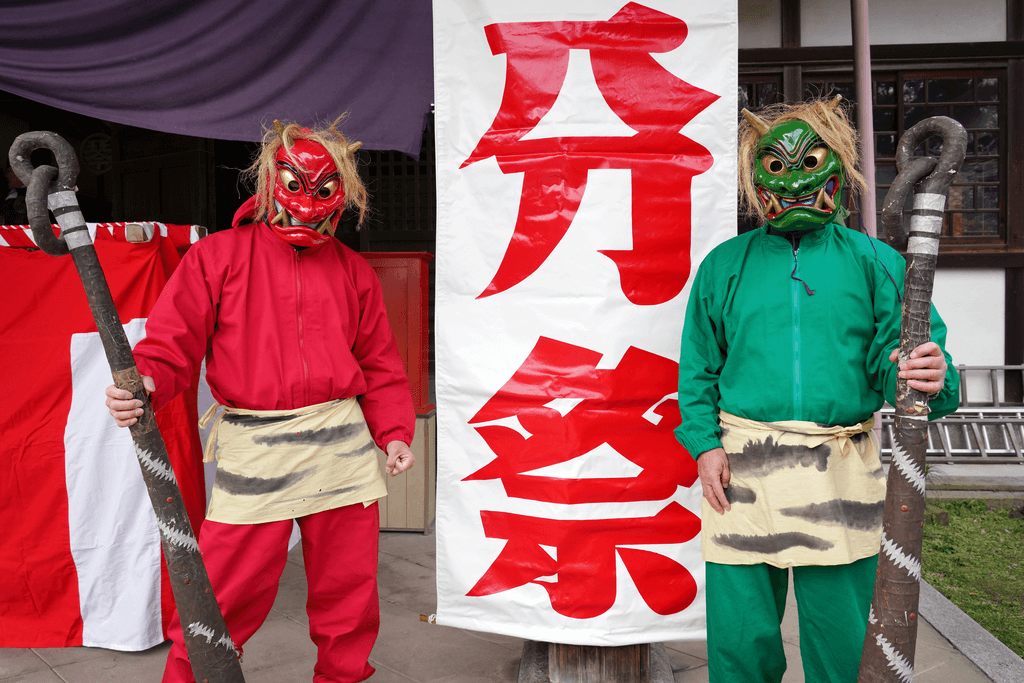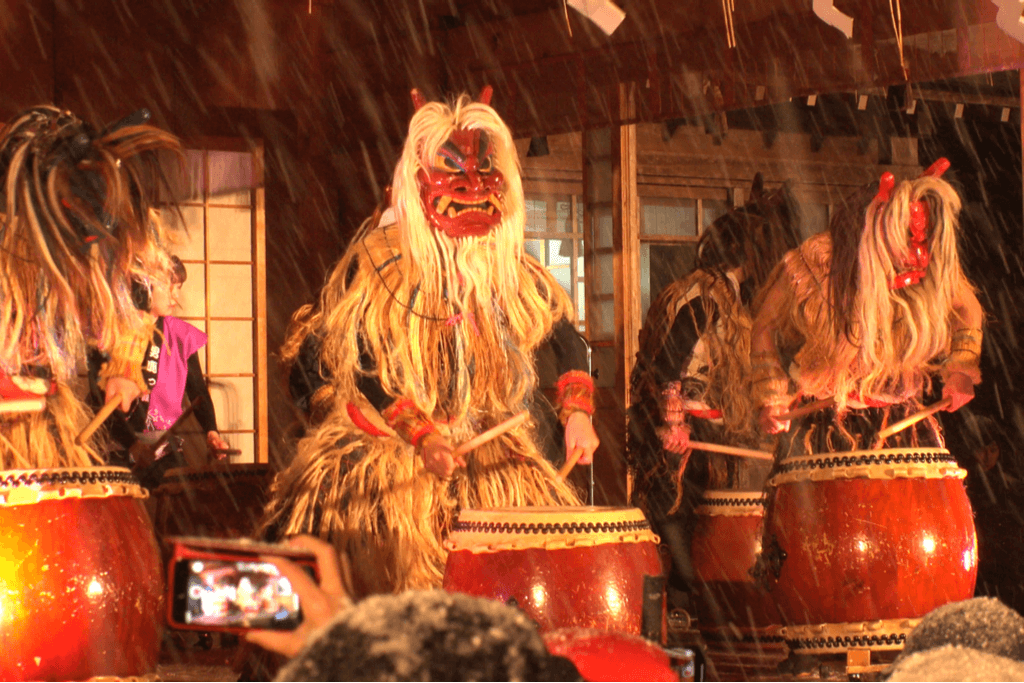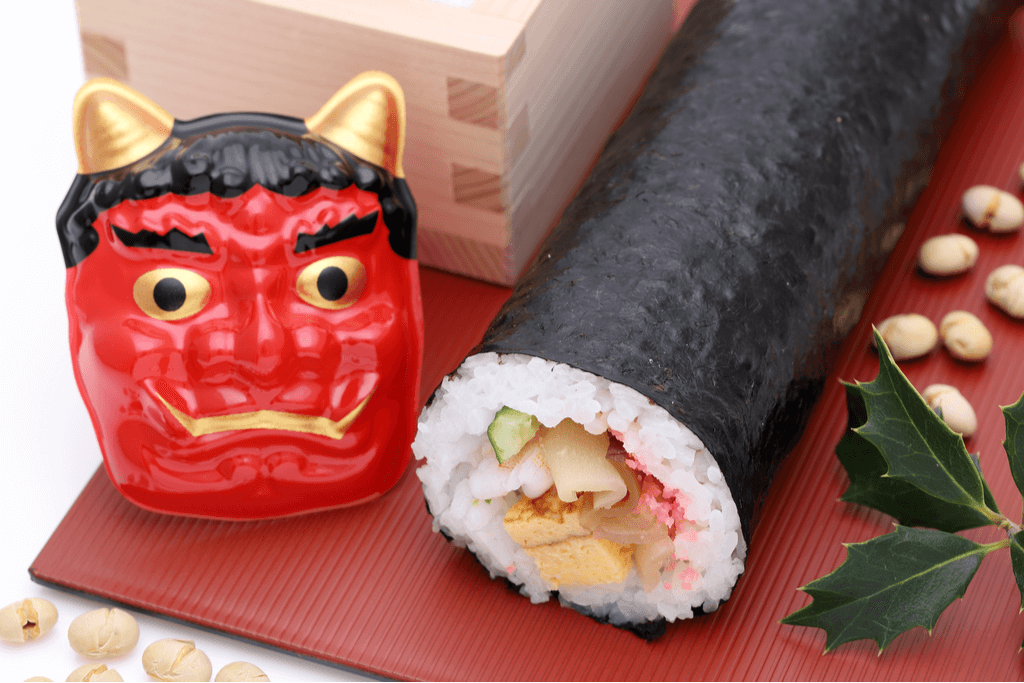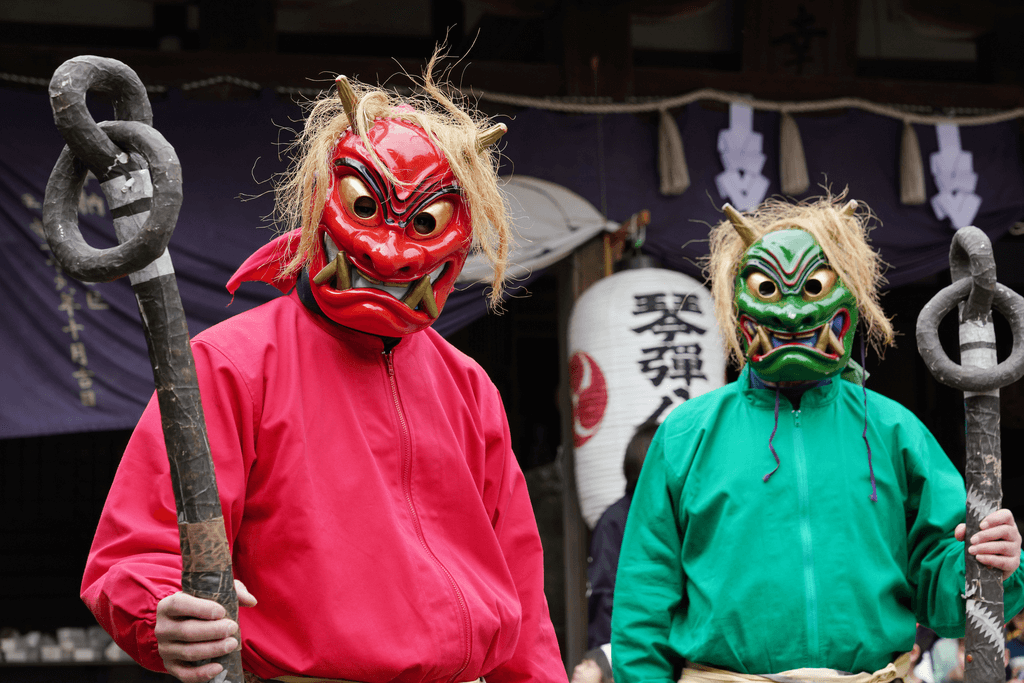Oni describes the mythical demon or ogre often appearing in Japanese folklore. Alongside other famous creatures like the Japanese kappa, the Japanese oni is one of Japanese culture’s most famous yokai (Japanese ghosts or spirits) demons.
Table of Contents
ToggleOrigins
The origins of Japanese oni remain uncertain. Theories suggest Buddhism influenced the birth of these ogres in Japanese mythology. According to history, China introduced the concept of oni to Japan via Buddhism. Additionally, the demon (oni) is the reborn spirit of an evil person who died or even the spirit of someone wronged in their previous life – much like a ghost in Western mythology.
What does “oni” mean in Japanese?
The name ‘oni’ comes from the Japanese reading of the Chinese character for ghost – 鬼. Initially, it is thought that the term ‘oni’ actually referred to any spirit, monster, or ghost, but it gradually evolved to mean the oni we know today.
Appearance

What does an oni look like?
Well, oni generally has the same shape as people, more often than not men, with horns. Female oni occasionally appears in the literature. However, they are initially depicted as male and transform into a female-like form when experiencing jealousy.
Oni are said to be bigger than a grown man, towering over humans, and scary, coming in red, blue, or green colors. It is unknown why the oni are these colors, but it is rare to see another color of oni. They often have big, scraggy beards; wild, staring eyes; sharp claws; and long, sharp teeth.
Oni are generally depicted wearing a loincloth, a small piece of tiger skin that covers their modesty parts, but nothing else.
They also have one or more horns on the top of their head, which are said to be those of an ox. This combination of tiger (for the loin cloth) and ox (the horns) refers to the Japanese word for the northeast. Consequently, this direction brings bad luck. An oni is also believed to be very strong; hence, they can overpower humans.
Looking to enjoy a cup of Japanese tea or snack while reading up on Japanese mythology? Check out Sakuraco! Sakuraco sends authentic Japanese snacks, sweets, teas, and tableware straight from local Japanese makers to your door! So enjoy a taste of Japan and read up!
Behavior Traits
According to tradition, Japanese oni are famous for their extreme wickedness. In addition, they are prone to seize every opportunity to cast spells and inflict suffering upon their unfortunate victims. Most oni resides in hell, along with all the other demons, and come up to earth to take human life and torture them. Burning houses, eating people, tearing them apart – all in a day’s work for a terrible oni.
Oni come from the underworld-wielding big iron clubs, which they use to destroy things in their path and humans. They will go after any awful person – but not the awful ones. This is because the worst humans will become demons themselves.
Recently, there have been some excellent stories about oni, depicting them as creatures who only want a bit of company. These stories about oni play on the oni’s similarity in shape to humans, giving them human characteristics such as loneliness and companionship.
Famous Japanese Oni Legends & Mythology

There are a few famous oni in Japanese demon lore.
The most famous is probably Shuten-douji. In this myth, the Shuten-douji is responsible for many women from a countryside village going missing.
A group of warriors decide to go and save the women, meeting the Shuten-douji demon who has been doing all the kidnapping. They knock it unconscious with a special drink and cut off its head. Even though it is detached from the body, the head tries to bite the lead warrior. Luckily, he keeps it away by putting on two other helmets. At this point, the warriors defeat the demon, and it returns to its proper form, at 50 feet tall and with fifteen horns! The warriors return the body to the village to show everyone they killed the demon.
Recently, there have been stories about kind demons, such as The Red Oni Who Cried.
In this story, the red oni is sad because the villagers don’t like it. As a result, the blue oni – hatches a plan to get the villagers to change their minds. Unfortunately, the plan goes wrong, and the blue oni has to leave the town, making the red oni even more depressed.
Other Japanese folktales of note are Momotaro the Peach Boy and The Oni Mask.
Modern Day Japanese Oni

People celebrate oni in popular culture and have an essential part to play year-round. Every year, March 7th is Setsubun or ‘Bean Throwing Day.’ For Bean Throwing Day, someone sports an oni mask and tries to scare children, who drive it out by throwing dry beans at it while chanting: ‘Demon Out! Good Luck In!’
You may have heard the term ‘oni’ in the Japanese anime series Demon Slayer. However, this depiction of this creature is more like a vampire and a bit different from the standard version. Oni can also be found as masks or characters in TV shows and video games. See if you can find an oni for yourself!










